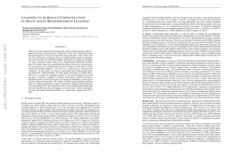PRENet: A Plane-Fit Redundancy Encoding Point Cloud Sequence Network for Real-Time 3D Action Recognition
Recognizing human actions from point cloud sequence has attracted tremendous attention from both academia and industry due to its wide applications. However, most previous studies on point cloud action recognition typically require complex networks to extract intra-frame spatial features and inter-frame temporal features, resulting in an excessive number of redundant computations. This leads to high latency, rendering them impractical for real-world applications. To address this problem, we propose a Plane-Fit Redundancy Encoding point cloud sequence network named PRENet. The primary concept of our approach involves the utilization of plane fitting to mitigate spatial redundancy within the sequence, concurrently encoding the temporal redundancy of the entire sequence to minimize redundant computations. Specifically, our network comprises two principal modules: a Plane-Fit Embedding module and a Spatio-Temporal Consistency Encoding module. The Plane-Fit Embedding module capitalizes on the observation that successive point cloud frames exhibit unique geometric features in physical space, allowing for the reuse of spatially encoded data for temporal stream encoding. The Spatio-Temporal Consistency Encoding module amalgamates the temporal structure of the temporally redundant part with its corresponding spatial arrangement, thereby enhancing recognition accuracy. We have done numerous experiments to verify the effectiveness of our network. The experimental results demonstrate that our method achieves almost identical recognition accuracy while being nearly four times faster than other state-of-the-art methods.
PDF Abstract

